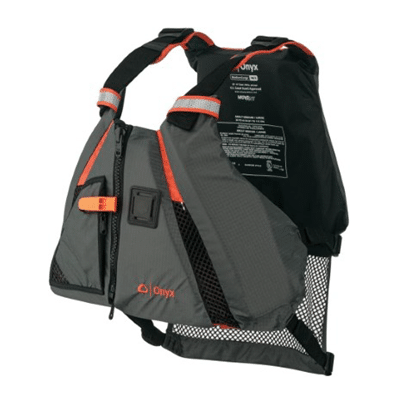If you’re dreaming of going on a canoe adventure with family or friends, you might be wondering what the canoe weight limit is. After all, you don’t want to find yourself sinking or unable to move over the water. It’s especially important to know how much weight a canoe can hold if you’re going on a full day, overnight, or multi-day canoe trip.
While the average canoe is 16 feet in length and will hold two people, it can often hold as much as 940 pounds. This is generally the maximum weight that a recreational canoe of 16 feet that can hold two people can mange.
If you’ll be using a 14 foot canoe, it should be able to hold about 700 pounds total. If you’re going with a longer, 17 foot canoe, it should be able to hold more than 1160 pounds total (of passengers and gear).
Factors Affecting Canoe Weight Limit
The precise weight capacity of your canoe will depend on not only length and width, but also the materials with which it is built, and even the manufacturer. Let’s take a closer look at the factors impacting how much weight your canoe can hold.

- Length and width of canoe: Longer canoes can usually hold more weight. A wider canoe can also hold heavier loads.
- Depth: A canoe’s depth (the distance between the gunnel and the hull’s bottom) also has an impact on how much weight it can hold. The greater depth the canoe has, the more weight it can usually hold.
- Building materials: For a canoe that will carry a great deal of weight, look for one that is built of wood, aluminum, or fiberglass. These materials are light in weight themselves, so the canoe is able to hold more weight in people and gear. Canoes that are made of polyethylene plastic and other cheap materials are heavier. This is why they negatively impact how much weight the canoe can hold.
- Fullness: A canoe’s fullness is how quickly the vessel grows in width when you progress from the stern or bow to the middle. If you have a fuller canoe, it’s likely to be able to hold more weight than canoes that are thinner in size.
Loads You Can Carry in Your Canoe
There are three different kinds of load that you can carry in a modern canoe. These include:
- Gear for Canoeing: The canoeing gear you put in your canoe is included in your canoe’s overall capacity. Be aware that gear even includes what you’re wearing, such as your life vest. It also includes your paddle and any camping equipment you’re bringing.
- Passenger and Paddlers Capacity: This is the capacity that your canoe can handle when it comes to the number of people that can be in the canoe safely at the same time. This is less than the canoe’s people, motor, and gear capacity.
- Canoe Motor Capacity and Horsepower: Weight and horsepower are the two primary factors of canoe motor capacity limits. The weight of your canoe’s motor is included in the vessel’s overall carrying capacity. Horsepower is the maximum power limit that is determined by the safe amount of speed and power to move a canoe of a specific size.

Non-Motorized Canoe Weight Limit
The canoe’s manufacturer determines its maximum weight limit for people and gear. This limit is the maximum amount of weight that the canoe can carry while still being able to float. You should avoid loading a canoe to this extent. If you do, you’ll have to deal with reduced speed and paddling efficiency as well as less maneuverability. Also, you would find that the waterline would get near the gunwales. This would mean that if there’s any tipping, the canoe could be swamped.
What is Canoe Performance Weight Limit?
If you’ve been looking around for canoes, you have probably noticed that some high-end manufacturers provide a “performance,” “efficient,” or “practical” capacity that is much lower than what is given for the maximum weight limit. This is just one indication that a canoe’s maximum weight capacity is higher than you should go by. If you were to load up your canoe to this extent, it would be very impractical.
Why Do Some Manufacturers Not List a Maximum Weight Capacity?
There are certain manufacturers, such as Clipper Canoes and Wenonah Canoes, that don’t include maximum weight capacity limits on the descriptions of their individual canoes. These companies provide rationales for this decision.
Wenonah Canoes explains that the specific weight capacities published by other canoe makers can be misleading. This is true for several reasons:
- One is that water in the canoe’s bilge will quickly increase the vessel’s load.
- Another is the fact that a canoe that is loaded even somewhere close to its stated limit won’t handle well. If there is a strong current or waves in the water, paddlers need to be more safety-minded and should carry lighter loads.
- Finally, the skill and experience level of the paddler plays a significant role in determining how much weight a canoe can deal with.

It’s for these reasons that even if your canoe comes with a maximum weight capacity, you should probably stay away from that capacity by approximately 20%. Never try to push your canoe too far in terms of what it can hold. If you do, you could end up with a swamped canoe. It could even end up sinking.
Can You Calculate Weight Capacity Yourself?
If you’d like to figure out the weight capacity of a canoe that you don’t have that information for, there is a way to do it yourself. The length and width of the canoe are the two most important factors that will determine the weight capacity.
How to Calculate Canoe Carrying Capacity (formula)
Start by figuring out the canoe’s carrying capacity. You can do this by multiplying the canoe’s length by its width and then dividing the result by 15. Once you have the carrying capacity, multiply it by 150. This should give you an idea of the weight capacity. You also need to consider the material the canoe’s construction material … the shape, the design, and accessories on the canoe.
Best Canoe Material for Above-Average Weight Capacity
If you want a canoe that will hold more weight, look for one made of wood, aluminum, or fiberglass. Avoid materials such as Tuff Stuff, Royalex, and Kevlar. If you purchase a fiberglass canoe, choose one produced with different composites. This will ensure that it ends up as a stronger material. Fiberglass composites contain strong fibers which are strengthened with the addition of resins. This type of canoe can generally support more weight.



